The Wild African Dog (Lycaon pictus) an endangered species
Introduction
I believe whoever said “There is strength in Numbers” had the African Wild Dogs in mind. These ruthless social mammals have a tight knitted bond in all there interactions, one you’ll want to associate with the wolves; funny thing is, they hunt and kill wolves. The only creatures above these guys on the food chain are we humans, and probably lions, and there have been several reports of lions being attacked and killed by the African Wild dogs.
Their strengths lie in their numbers, as a regular pack usually comprises of 40 individuals. Also, their agility and speed make these guys efficient and fearsome while haunting a prey, regardless of its size. An African wild dog can run up to 40 km/h, the only problem this bunch is faced with is that they are losing their numbers one advantage - Their numbers.
This endangered species is breaths away from extinction, and guess who their number one predators are? You got it, Humans! 😞 God! I hate those guys!! 😡
Meet the African Wild Dog
These wild dogs do not have a living or an existing close relative but it is said to have had a relative called the Miacis from about 40 million years ago. The Miacis body was elongated with short legs. On the average the African wild dog grows to a length of about 24-30 inches and weighs between 44 and 55 pounds.
Its weight varies with its location as the African wild dogs in Southern Africa weighs (with a weight of 66 pounds) more than the ones in Eastern Africa (with a weight of 44 and 55 pounds). Most dogs are cute and well, very fluffy that you just want to cuddle with them forever but the African wild dog isn’t a part of this fantasy.
It is curious looking and has a painted coat that has bristle hairs and lacks underfur. I most definitely know Mr/Mrs painted dog wouldn’t pass a cuddling competition with this distinctive characteristic of it. Its skull is shorter and broader than most of its family member’s.
The wild dogs have a characteristics black skin with fur colouring ranging from tan, white, yellow, black to red with these cookies being randomly mixed on the distinctive individual, that is, it doesn’t have a pure fur colour. When you take a close look at the African wild dog you will notice that its ears are somewhat funny and well our domestic dogs do not have those kinds of ears, also, they are taller than most domestic dogs.
These painted dogs communicate through producing a squeaking or chirping sound. The distinctive colours of its fur, which I mentioned earlier is seen as irregular markings on the body of the wild dogs. They have a lifespan of approximately ten years.
The wild dogs have the habit of gradually putting on its ‘birthday suit’ as it gets old, I mean they lose their fur as they age and some may even get completely naked when they are quite old. Looking at the feet of these wild dogs you’ll notice that they have four toes on each of its foot unlike the other members of its family which have five toes.
I watched a couple of YouTube videos about the African wild dogs and the way they behave and I could bet and confirm as theorized that they are the most social and probably the most intelligent member of their family. You should watch how these babies hunt, it’s quite scary and not for the faint-hearted but well it’s worth the thrill. I also noticed that they hunt and eat in groups or packs just like the wolves.
Where Can You Find The African Wild Dogs And Where Do They Live?
The wild dog is native to sub-Saharan Africa and has lived there for a very long time. You can find these wild dogs in the savannah and arid areas of countries like Botswana, South Africa, Zimbabwe etc. The wild dogs were theorized to have been distributed in about 40 countries but its population has drastically decreased to about 10 and 25 countries due to loss of its habitat and legal and illegal shootings by humans. The wild dogs love Savannah and arid areas because the features of habitats like these help it hunt easily and well faster, unlike the forest zones that trees would interrupt its vision when it's hunting its prey.
Although the wild dogs have tried to avoid forest zones some packs of it have been spotted in some forest areas like Harenna Forest in Ethiopia. They require a wide scape of land to manage their packs and pursue their prey in order to feed them because a pack requires about 200 - 2000 Square Km (124-1243 Sq Miles). Asides from the Harenna forest the wild dogs have been found in mountainous habitats like Mount Kilimanjaro in Zimbabwe at an altitude of about 1800 meters. These wild dogs are found in mountainous areas and sometimes woodland areas because these areas are inhabited by its prey.
I call these zones the food zone.
The African wild dogs belong to the family Canidae and are obviously carnivores. They prey majorly on ungulates but this doesn’t mean that they fully accustomed to feeding on ungulates they also feed on other animals. These dogs are savages as they can eat their prey alive, I mean to bite off the prey's skin while it’s alive until they finally kill it. They usually hunt and eat together but not everyone in the pack goes for hunting as there is the need for some to stay back to take care of the young while the others hunt and bring food for them. This is how interestingly intelligent these dogs are!
The African wild dogs love to pursue their prey before killing it and consuming it. They rarely feed on carrions but a few have been spotted feeding on the remains of leopards and tigers. These guys are rarely or never seen hunting alone because of their very strong social bonds with packs of approximately 20 to 30 individuals including the young and adult wild dogs.
Behavior and Reproduction In African Wild Dogs
This is a video showing an individual pack of the African wild dogs running along with their puppies.
Wikicommons. YouTube uploader-Agbona igwemoh. Author/Owner: Paul hayes, CC BY-SA 3.0
The African wild dogs reach sexual maturity when it’s about 12 to 18 months of age but do not try to reproduce until they are about or up to a year and ten months old. This, to me is the most interesting part of this article.
These wild dogs have a very high social bond and a very powerful hierarchy system as well, where there are an alpha male and an alpha female. Here are the rules people :)-
Only the alpha male and female are allowed to mate and eventually reproduce
If a subordinate female wants to reproduce or mate she has to leave the pack and go find an entirely new pack. If you are thinking what I am thinking, you too would say that this is quite absurd because reproduction occurs once in a year when prey (feed) is abundant. The gestation period of the wild dog or the painted dog is about 70 days and these puppies being born are born naked and blind.
The mother and the puppies(this is only when they are up to 3 weeks old) are fed with regurgitated meat and cared for by the pack until these puppies are up to about 2 and 3 months of age where they can leave the pack to form theirs if they want. I know you were probably wondering what would happen if a subordinate female breaks the rule, you know, there are no absolutes in life :). Well, you should stop thinking too much, if the subordinate female eventually mates and reproduces the alpha female will either kill the puppies herself or stop the subordinate female from feeding and caring for her puppies until they eventually die. The African wild dog has an average litter size of about 7 and 10 puppies.
All the female African wild dog puppies move out at age 14 and 18 months to form a new pack with stranger males. The males do not like to move out, well unless they need to or when there are more than three male puppies born in the same litter. In-breeding is naturally prevented in the African wild dogs as females move to form new packs and most times discards the existing females in that pack. Males are usually more than females in the African wild dog’s pack.
Threats
- Destruction of its habitat by humans
- Poaching
- Climate change
- Illegal shooting
- Hunting
- Increasing Lions population (Major predator in the wild)
- Diseases e.g Rabies
- Snaring
- Decrease in the number of preys.
A good number of wild dogs have been found dead in the wild as a result of snaring or poaching by humans or specifically game farmers/hunters. Statistics showed that more than 50 percent of the wild dog's population was lost as a result of snaring and pouching. A record of wild dog kills in Africa showed that about 9400 of the African wild dogs died as a result of poaching in 2001.
Humans have become too populated that they have started to drive out these wild dogs from their habitat to build our own. Quite annoying, you would say. I know it’s survival of the fittest out here but I do not feel it’s a right thing to keep destroying these dogs habitats to build ours. It’s totally wrong on my path. The decreasing number of its prey population is also a threat to the African wild dog. The African wild dog loves to feed on impala which in fact is one of its favourite animals to prey on, right before the kudu and warthog are all declining in their population thereby posing a threat to the existence of the wild dogs.
In 2007, Malilangwe Reserve had about 41 African wild dogs but sadly lost 40 of them to the rabies disease. This killing or death from my own point of view actually had a very bad effect on the African wild dog’s because, after that incident, no African wild dog returned to that arena up until a year. The increase in the population of the lion posses a major threat to the African wild dog’s existence as they have more predators ready to kill them off. Farmers poison these guys, shoot these guys and always blame them for loss of their livestock. This is a major threat to the existence of the African wild dog. Another threat to these animals lives is the rabies disease and distemper outbreak. The first rabies outbreak was recorded in Kenya between August and September 1989 and was said to have killed 21 to 23 individual wild dog pack.
Climate change as we know it has always been a major threat to wildlife and well the African wild dogs isn’t an exception to this threat. The temperature in the wild is rising in a very rapid manner due to global warming and the wild dogs are not well very okay with this. This rise in temperature reduces their hunting time and increases the mortality rate of its population especially the puppies. If the puppies are threatened then the population is critically threatened. The number of the puppies who live up to at least one year of age had reduced by 35% in Botswana that is, from 5.1 per litre to 3.3 between the years 2000 and 2012 with characteristics rising temperature by 1.1C in this period. It also dropped by 31 and 14 percent in Kenya with the same cause.
The African wild dogs cannot hunt as a result of this rising temperature in the wild, it is even speculated that the temperature may become too high for these wild dogs to even exist. This avoidance of too high temperature limit their hunting and feeding and makes available a very small amount of regurgitated meat for the young.
Efforts put in to help conserve the African wild dogs
The African wild dogs can be passed as one of the most endangered species of mammals and carnivores in Africa. Do you know how bad its population has drastically declined over the years? Well, let me give you estimated figures. The African wild dogs were widely distributed at a time with population counting at about half a million but now we have only about 6600 left with only 1400 mature adults included in this population.
In order to save the African wild dogs, the WWF (World Wild Fund for Nature) has made several efforts to create a protected area for these dogs and also reduce human conflict. These efforts have been made evident in some areas of Africa where these wild dogs need the most protection. Other conservation programs and research has been made in these areas to help save this wild dogs in any way possible. The protection of these African wild dogs would help in developing their habitat and improving the biodiversity within this habitat which will in turn help in the longevity of these species of mammals.
Kavango–Zambezi Transfrontier Conservation Area (KAZA) is an area that the WWF has been able to provide large landscapes for the African wild dogs to live to a comfortable extent. The WWF has tried hard to work hand in hand with KASA to create a protected area in Angola, Botswana, Zambia, Namibia and Zimbabwe for the wild dogs to live and breed freely as a means to conserve this species. One way in which KAZA and WWF have tried to provide proper protection for these species of mammals or the African wild dog is the development of a method of creating awareness of the condition of this species and also putting it up in advertisements affiliated with the conservation of wildlife and endangered species.
They have tried to minimize human and wild dogs confrontation by giving incentives to those who find a wild dog and report it as alive. KAZA developed a species management plan with a major aim to, well, of course, conserve the wild dogs. In 2012, collars were put on these wild dogs to help monitor their movement but that didn’t turn out well for the WWF because the wild dogs are travellers and can travel to unbelievable distances which made it difficult for put collars on them again and made the study cumbersome and frustrating.
The African wild dog conservation is another medium by which efforts have been put in for these dogs to be conserved by carrying out research affiliated with the conservation of these species of animals in critical areas like zambia. This efforts put in, by these management boards all have the same goal- To conserve the wild dogs, protect its habitat and help increase its population.
Conclusion
The African wild dog is not a popular breed of dog and is listed on IUCN red list as an endangered species. Its habitat is threatened and mortality has been on the high due to negative impacts on humans, predators and the environment as a whole. The wild dogs to me are a part of the African culture and shouldn’t be allowed to go extinct. They are wild, opportunistic in their hunting behaviour, savages, the lost could go on but they do not necessarily attack humans so why do we attack them?
You would say, they destroy your livestock as a game farmer and deserves this plight. I understand how annoying and frustrating that could be, but these little guys are just fighting and striving for their survival you how it’s prey population is reducing and it’s forced them to feed on your livestock. You shouldn’t put the blame on them, if you were in their shoes you’d most definitely do the same :).
We can control try to control the disease affecting the African wild dogs, the population of its prey and predators, we can also try to protect their habitat and guard their puppies all in a way to conserve these species but can we control the environment? I guess we can. This doesn’t apply to only the African wild dogs it applies to the wild as a whole, we should try to control the weather for the betterment of the wild and the animals in it, but how do we?
Plant a Tree Today. Help Control Global Warming and Conserve Wildlife!
References
The African Wild Dog
Reproduction and behavior of the African wild dog
Threats
Conservation
Image Sources
All images used here are from free sources, licensed under the Creative Commons and liable for commercial use.

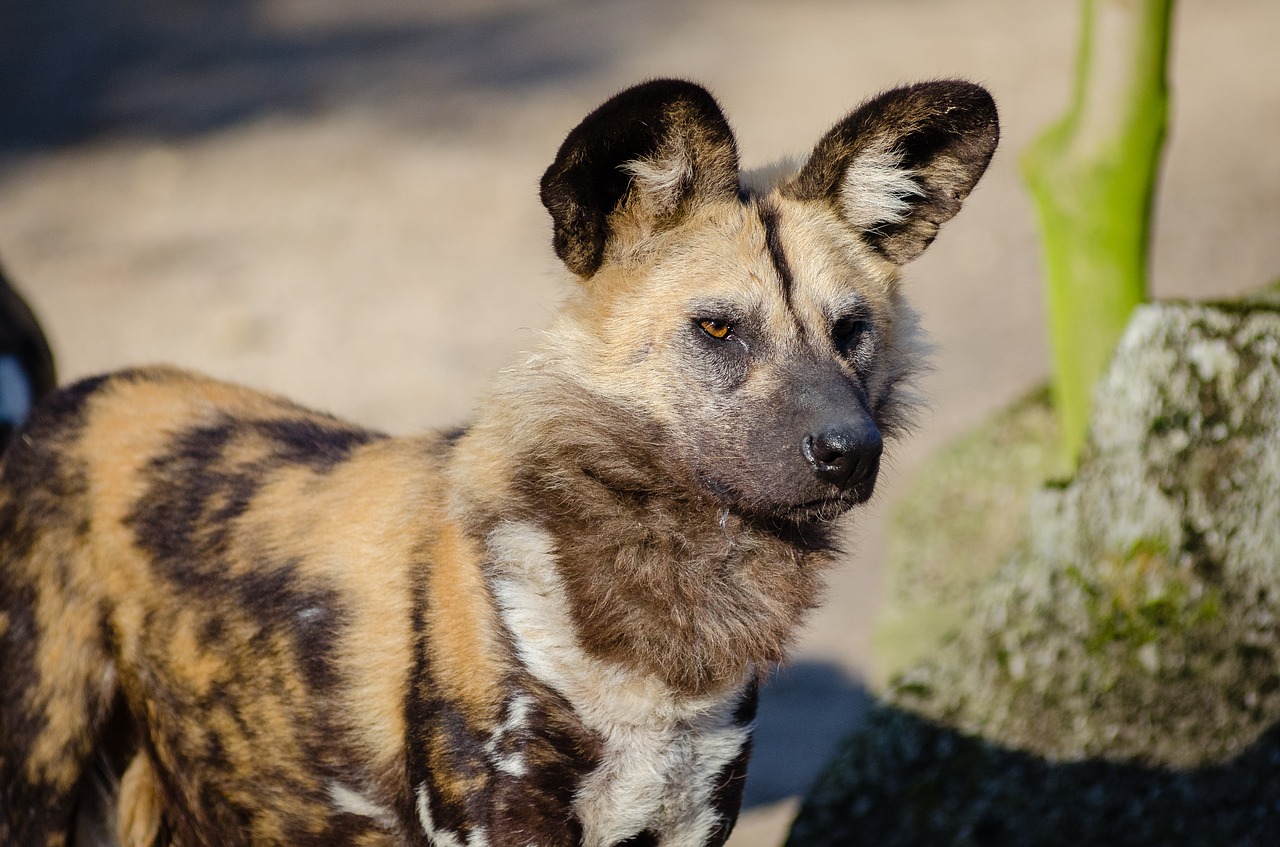
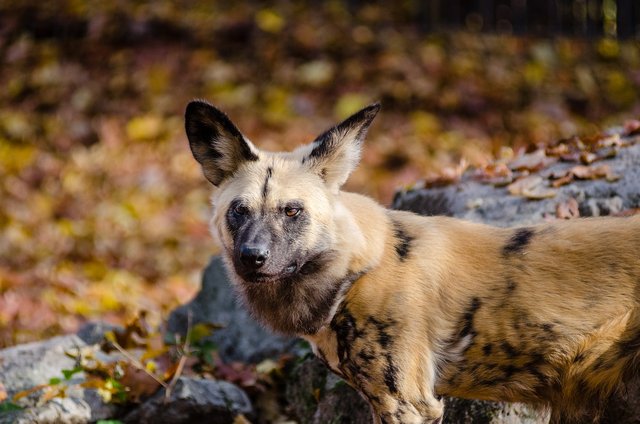
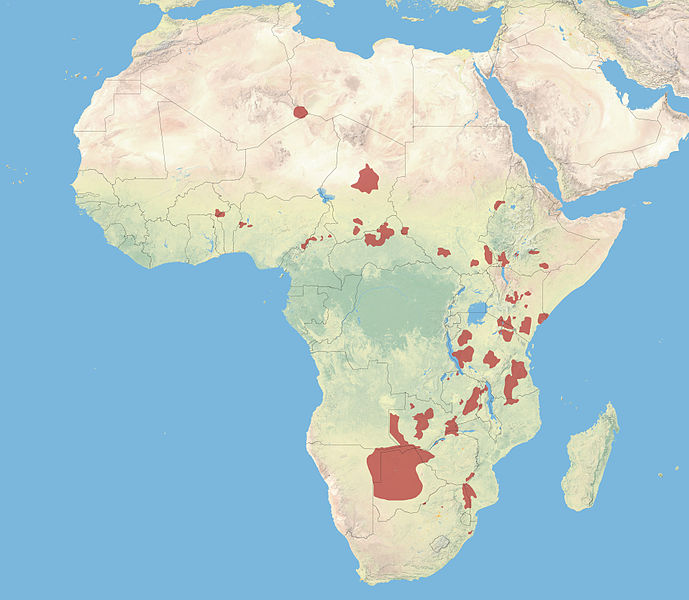
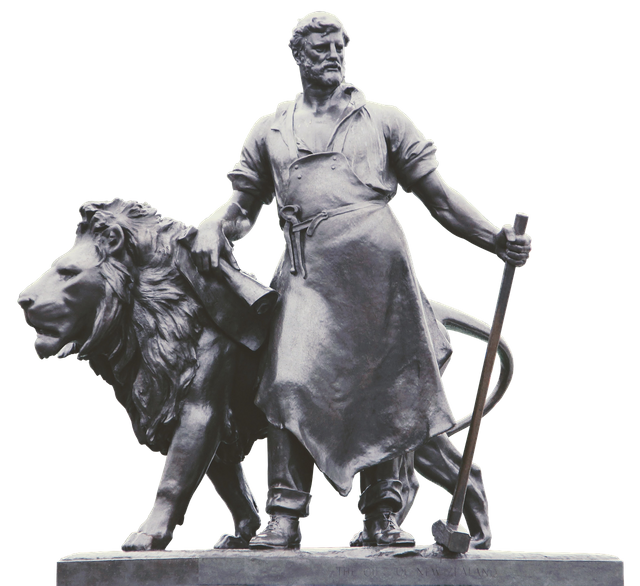
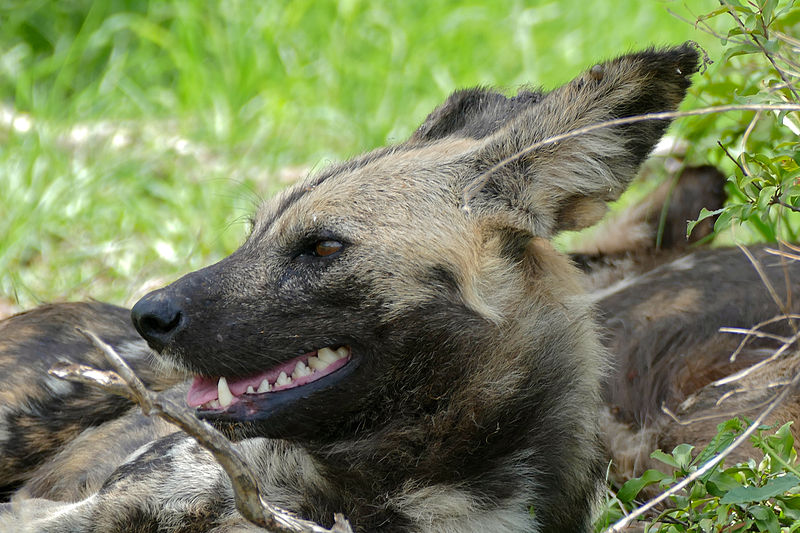
Its a shame that such animals are endangered. Its even sadder when yu realise that almost 3 species go extinct daily (discovered and undiscovered). Great post thou! Keep ig up :)
Another great posts. The lover of the endangered species, @florae
Thank you
Hello! I find your post valuable for the wafrica community! Thanks for the great post! @wafrica is now following you! ALWAYs follow @wafrica and use the wafrica tag!
Amazing post my one stop page for science post. Keep steeming
Thank you
Being A SteemStem Member
Being A SteemStem Member
Is there any tamed versions of this wild dog?
I thought lion population was also going down. This is good, right?
No known tamed version.
They are always in the wild
When I said increasing lion population___I meant increasing lion population in the wild dogs habitat not all over the world. It’s a good thing if the lion population isn’t high in the wild dog’s habitat
Dear @florae:
I apologize for getting 2 comments by @steemstem-bot on your post. The reason it was caused (when looking at the log file written) is that it sent the comment and received a 500 error code so it tried to send it again however both comments must have been received by the nodes. It happens to relatively few people compared to all the comments made. The other problem is that the other failsafe, which checks the most recent block for a comment made by the account on that post, only checks 1 block so if the comment is put in 1 block later then my failsafe won't work. Again, my apologies.
Sincerely,
Kryzsec
I totally understand.
Thanks for the efforts put in to make the bot better @kryzsec
Cheeers!
As much as i love dogs, I dont think these ones fit in.
Nice post ma'am
The number of endangered species is growing daily. Am in support of actions to protect these species. Thanks for this educative post.